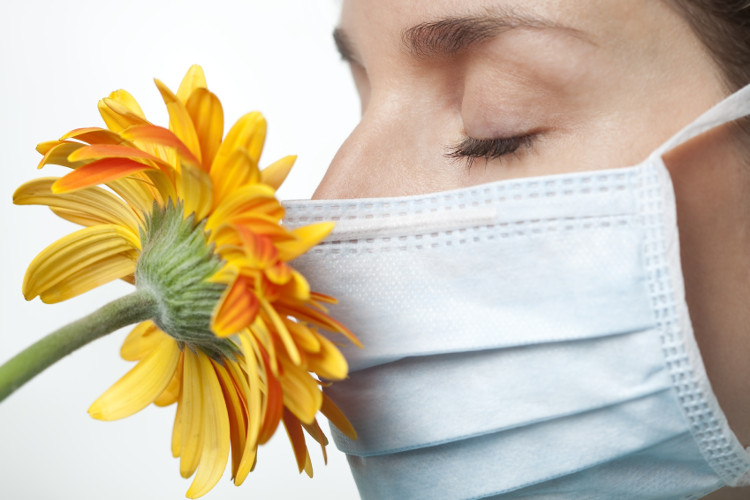Be careful of asthma attacks in Hanoi
Hanoi in the flower season with pearly daisies flooded, but pollen dispersed in the air flying into your eyes, nose and lungs easily triggering asthma .
A few days ago thousands of Australians were hospitalized, at least 6 people died of respiratory illnesses, asthma, allergies, caused by the storm that spread pollen in Victoria. In Vietnam, the northern provinces in winter many blooming flowers are also uncomfortable for people with asthma, chronic respiratory disease. In addition to keeping the body warm during cold weather, the patient is advised by the doctor to be careful with the pollen in the air due to the inflammation that triggers an asthma attack.
Dr. Tran Thien Tai, Clinical Immunological Allergy Clinic, Hospital of Ho Chi Minh City University of Medicine and Pharmacy, said more than 300 million people worldwide are diagnosed with asthma. In Vietnam, an estimated 5% of the population suffers from this disease. Among the triggers for asthma, pollen is considered a "dangerous natural culprit" when it comes to the spread that can cause thousands of people to have asthma at the same time, many victims die. due to not being treated promptly. Europe recorded 40% of the population has pollen allergy.

People who are allergic to pollen inhalation may trigger asthma.(Artwork: Health).
According to The Guardian, world history has recorded many thunderstorms that spread pollen to cause widespread asthma that leads to mass deaths. Until now, the scientific community has not been able to explain exactly the phenomenon, the experts only hypothesize that the occurrence of thunderstorms caused some kinds of pollen to be swept into the wet clouds, breaking small and dispersing. follow the air. When broken, each pollen particle can release over 500 microscopic particles. They spread dense in the air, easily clinging to human lungs, causing bronchospasm, difficulty breathing.
In the milder case, pollen flies into the eyes, nose or on the skin of the person causing the allergy. Common signs of allergies are runny nose, nasal congestion, sneezing, itchy throat, tearing, redness of the eyes. Patients with rash, urticaria, itchy eyes, redness, hypotension due to dilated capillaries, shortness of breath due to bronchial air spasms, stimulates the smooth muscle of the gastrointestinal tract causing spasms and vomiting. Severe allergies can lead to death.
According to Dr. Thien Tai, treating asthma in particular and allergies in general, the basic principle is finding the causative agent. Physicians can perform multiple treatments to find specific allergens for each patient to provide an appropriate treatment regimen. For example, for victims of pollen inhalation leading to exacerbations of asthma, the drug (usually in the form of inhalation) should be used to relieve symptoms and cut the asthma immediately. After that, the doctor prescribed daily oral medication to help patients reduce respiratory edema and breathe more comfortably.
Experts on immune allergies recommend allergy prevention community based on the basic principle of avoiding direct contact with allergens. For example, people with an allergy to pollen should limit their exposure to the blooming season because the pollen often spreads heavily in the air. It is necessary to regularly wash the nose with diluted saline solution. Wash your hair daily to clean the pollen from your hair. Regularly wash clothes, blankets, and restrict to flower gardens where there are many pollen dust and dispersed spores.
- 4 ways to deal with asthma attacks - bronchial asthma
- 8 common questions about asthma
- New findings on asthma
- Free examination for 1,000 people with asthma
- Bronchial asthma increased sharply
- Asthma - things to know
- The concentration of allergens at an increased place leads to asthma
- Symptoms of asthma
- Vitamin D can treat asthma
- Why do so many Olympic athletes suffer from asthma?
- Orthopedic technology with bronchial heat and asthma
- Medications for asthma can treat aortic aneurysms
 Green tea cleans teeth better than mouthwash?
Green tea cleans teeth better than mouthwash? Death kiss: This is why you should not let anyone kiss your baby's lips
Death kiss: This is why you should not let anyone kiss your baby's lips What is salmonellosis?
What is salmonellosis? Caution should be exercised when using aloe vera through eating and drinking
Caution should be exercised when using aloe vera through eating and drinking